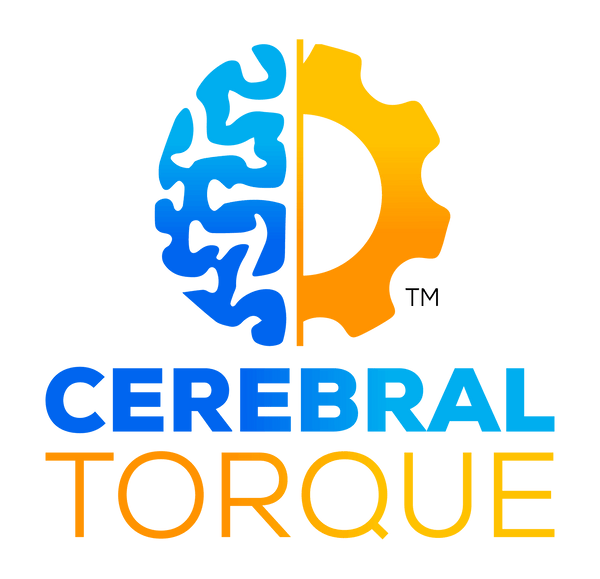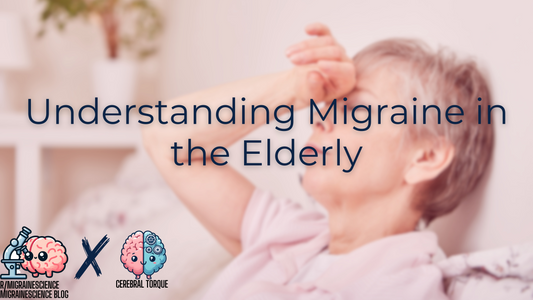
Hemiplegic Migraine
Cerebral TorqueShare
This post is for educational purposes only and may contain errors. Please talk to your neurologist.
Overview
- Hemiplegic migraine is classified based on the presence of motor weakness as part of the migraine aura, which occurs along with other aura symptoms: visual, sensory, and/or speech/language.
- Although -plegic may indicate paralysis, most attacks are motor weakness.
- Familial hemiplegic migraine (FHM) is inherited in an autosomal dominant pattern. Types include FHM1, FHM2, and FHM3, which are channelopathies caused by variants in different genes (CACNA1A, ATP1A2, and SCN1A respectively).
- Sporadic cases occur in individuals without family history, sometimes due to de novo mutations or inheritance from an asymptomatic parent.
- Therefore, it can occur in families (familial) or sporadically in individuals.
Pathophysiology and Genetics
- The aura of hemiplegic migraine is likely caused by cortical spreading depression, a wave of neuronal depolarization.
- FHM1 involves variants in the CACNA1A gene encoding a calcium channel subunit. It has 50% penetrance.
- FHM2 involves variants in ATP1A2 encoding a sodium/potassium pump subunit. Penetrance is 63-87%.
- FHM3 involves variants in SCN1A encoding a sodium channel subunit. Penetrance is near 100%.
- These channelopathies increase susceptibility to cortical spreading depression.
- Known familial hemiplegic migraine genes account for only a minority of cases. Variants in other genes like PRRT2 have been found.
Epidemiology
- Hemiplegic migraine has an estimated prevalence of 0.01%.
- Onset is typically around ages 12-17 years. Females are affected more than males.
- Sporadic cases occur with the same prevalence as familial cases.
Clinical Manifestations
- Motor aura is the hallmark but patients ALWAYS have at least one additional aura symptom like visual, sensory, speech/language, or brainstem disturbances.
- Each aura symptom evolves over 20-30 minutes and may take hours to gradually improve. Generally, they last less than 72 hours, but motor weakness may persist for weeks.
- It usually begins with a visual aura then followed by sensory, motor, speech/language, and brainstem symptoms in that order.
- Motor symptoms often start in the hand and spread up the arm and face. They may be unilateral (sometimes switching sides during the same migraine attack or even between attacks) or bilateral (1/3rd of cases in FHM).
- In rare cases, aura symptoms may develop acutely (less than 5 minutes) thereby mimicking a stroke.
- Headache in most patients, either unilaterally or bilaterally.
- Most patients have a normal neurological exam between attacks.
- Babinski sign or unilateral hyperreflexia may be present on exam during attacks. Some patients (mostly FHM1 and some FHM2) have interictal cerebellar signs like gaze-evoked nystagmus or ataxia.
- Severe attacks may cause fever, impaired consciousness, seizures, cerebral edema, or cerebral infarction, sometimes leading to permanent deficits.
- Some patients have co-occurring epilepsy or chronic cerebellar ataxia (50% of FHM families have concomitant chronic progressive cerebellar ataxia that occurs independently of the migraine attacks).
Diagnosis of Hemiplegic Migraine
- Attacks fulfilling criteria for Migraine with aura and criterion B below
- Aura consisting of both of the following:
- fully reversible motor weakness
- fully reversible visual, sensory and/or speech/language symptoms.
(The criteria of FHM requires a diagnosis of hemiplegic migraine AND at least one first- or second-degree relative that has had attacks fulfilling the criteria for hemiplegic migraine above. If attacks fulfill criteria for hemiplegic migraine above, but there is no first- or second-degree relative that fulfills the criteria then sporadic hemiplegic migraine is diagnosed.)
Source: https://ichd-3.org/1-migraine/1-2-migraine-with-aura/1-2-3-hemiplegic-migraine/
- As stated above, family history establishes type as familial versus sporadic.
- Testing helps exclude other diagnoses like stroke, seizure, or tumor if the cause is uncertain.
- Brain MRI or CT can identify structural lesions. MR angiography or CT angiography can detect vascular occlusions.
- Genetic testing may help diagnose sporadic cases or familial cases with atypical symptoms.
Treatment
- Treatment options are limited by a lack of randomized controlled trials specifically examining hemiplegic migraine.
- There is minimal evidence regarding effective abortive medications for hemiplegic migraine attacks.
- For frequent or prolonged auras, calcium channel blockers like verapamil are commonly used as first-line prevention. Verapamil blocks calcium channels implicated in cortical spreading depression.
- For patients where headache pain predominates over aura symptoms, preventives more specific for migraine headache are options. These include antidepressants such as amitriptyline and anticonvulsants like topiramate, which modulate neurotransmitters and brain excitability.
- For familial cases, acetazolamide is suggested based on benefits seen in related channelopathies.
- Lamotrigine is an alternative choice if first-line therapies fail to reduce attack frequency and severity and for those whose aura symptoms predominate over headache.
- OnabotulinumtoxinA injections may also prevent attacks in refractory patients.
- Other alternative options include intranasal ketamine or IV naloxone during acute attacks
- Patients experiencing severe attacks with depressed consciousness, seizures, or other concerning symptoms may require hospitalization for monitoring and treatment. Supportive care aims to stabilize vital functions and treat complications like brain edema. Corticosteroids may shorten prolonged attacks.
Treatments to Avoid in Hemiplegic Migraine
- Triptans (potential for cerebral vasoconstriction)
- Ergotamine derivatives (potential for cerebral vasoconstriction)
- Beta blockers (may prolong symptoms, limit compensatory cerebral vasodilatory capacity, lead to cerebral ischemia)
- IV dihydropyridine calcium channel blockers (may cause cerebral hypoperfusion)
Note: The contraindication for triptans is due to an old, debunked theory that aura is a result of a lack of blood supply and triptans may exacerbate this causing cerebral ischemia. We now know aura is due to cortical spreading depression, which does not involve the vascular supply, but nerves depolarizing. As a result of this theory, hemiplegic migraine patients were never included in triptan trials. Until today, the contraindication remains. Always refer to your neurologist.
See: Risk of ischemic complications related to the intensity of triptan and ergotamine use | Neurology
Prognosis
- Most patients fully recover from attacks, though symptoms may be prolonged. Rarely, permanent neurologic deficits or even death occur after severe attacks.
- Attack frequency often decreases after age 50, evolving into typical migraine without hemiparesis.

